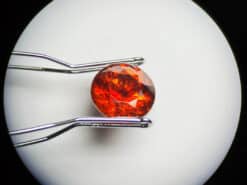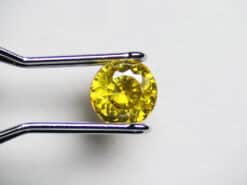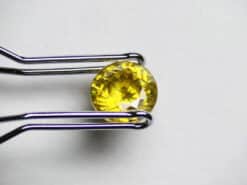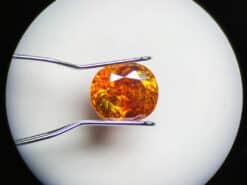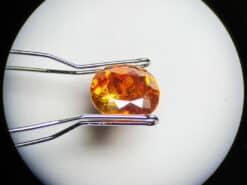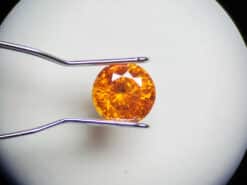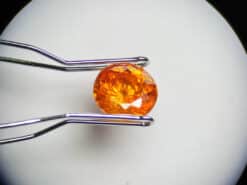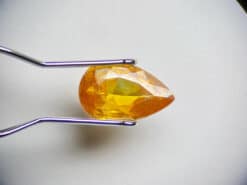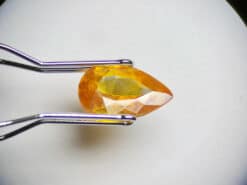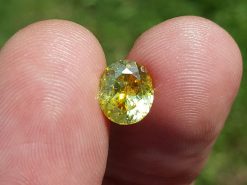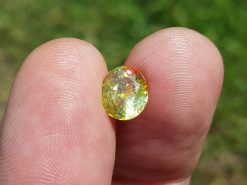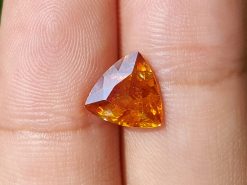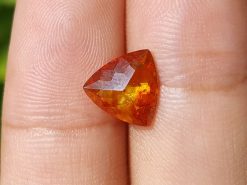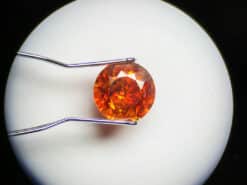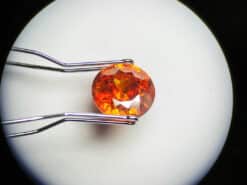Sphalerite
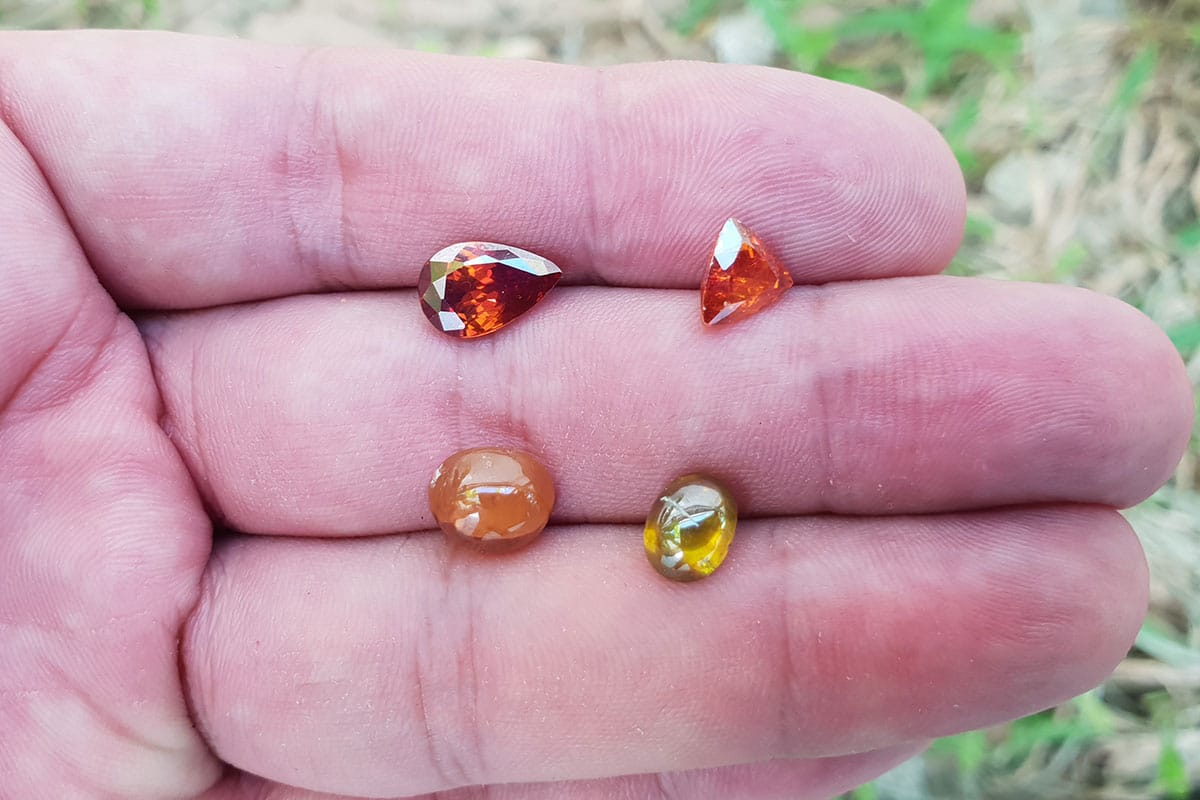
Sphalerite gem crystal mineral properties.
Buy natural sphalerite in our shop
Sphalerite is a mineral that is the chief ore of zinc. It consists largely of zinc sulfide in crystalline form. But almost always contains variable iron. When iron content is high it is an opaque black variety, marmatite. We usually found it in association with galena, also pyrite, and other sulfides.
Along with calcite, also dolomite, and fluorite. Miners have also been known to refer to sphalerite as zinc blende, black jack and ruby jack.
The mineral crystallizes in the cubic crystal system. In the crystal structure, zinc and sulfur atoms are tetrahedrally coordinated. The structure is closely related to the structure of diamond.
The hexagonal analog is the wurtzite structure. The lattice constant for zinc sulfide in the zinc blende crystal structure is 0.541 nm, calculated from geometry and ionic radii of 0.074 nm zinc, and 0.184 nm sulfide. It forms ABCABC layers.
Elements
All natural sphalerites gem contain finite concentrations of various impurity elements. These is generally a substitute for the zinc position in the lattice. The most common are Cd and Mn, but Ga, Ge and In may also be present in relatively high concentrations 100s to 1000s of ppm.
The abundances of these elements are controlled by the conditions under which the sphalerite crystal are formed. It is the most importantly formation temperature and also fluid composition.
Color
Its color is usually yellow, brown, or gray to gray black, and it may be shiny or dull. Its luster is adamantine, resinous to submetallic for high iron varieties. It has a yellow or light brown streak, a hardness of 3.5 to 4, and a specific gravity of 3.9 to 4.1. Some specimens have a red iridescence within the gray black crystals.
Their name is ruby sphalerite. The pale yellow and red varieties have very little iron and are translucent. The darker, more opaque varieties contain more iron. Some specimens are also fluorescent in ultraviolet light.
The refractive index as measured via sodium light, 589.3 nm, is 2.37. It crystallizes in the isometric crystal system and possesses perfect dodecahedral cleavage.
Sphalerite properties
The following section is pseudo scientific and based on cultural beliefs.
This very interesting crystal will help you harmonize your female and male aspects while also unleashing your creativity. It’s a strong crystal that will ground you spiritually, especially if you have been meditating with crystals and stones that work with the higher chakras.
It’s also an effective healing crystal that will benefit your body on a physical, emotional, mental, and spiritual level.
Sphalerite
FAQ
What is sphalerite used in?
For industrial purposes, The stone is used in galvanized iron, brass and batteries. The mineral is also used as a mildew-resistant element in certain paints.
Where is sphalerite found?
The best gem mineral came from the Aliva mine in the Picos de Europa Mountains in the Cantabria region on the north coast of Spain. The mine closed in 1989 and is now inside the boundaries of a national park.
In the United States the most important deposits are those in the Mississippi River valley region. There stone is found associated with chalcopyrite, galena, marcasite, and dolomite in solution cavities and brecciated zones in limestone and chert.
What is the fracture of sphalerite?
The cleavage is perfect. Fracture is uneven to conchoidal. The Mohs scale hardness is 3.5 to 4 and the luster is adamantine, resinous or greasy.
How much is sphalerite worth?
The stone sells between $20 and $200 per carat. The value is dependent on many factors, but cut, color, and clarity are the biggest ones. You need to find a qualified appraiser who is familiar with rare gems.
Is sphalerite gem rare or common?
It is quite rare in gem quality. Top grade specimens are prized for their exceptional fire or dispersion, which is higher than that of diamond.
How do you identify sphalerite?
One of the most distinctive properties of sphalerite crystal is its dispersion, which is higher than that of diamond. It also has six directions of perfect cleavage with faces that exhibit a resinous to adamantine luster. Specimens that display this distinctive cleavage are easy to identify.
How is sphalerite mineral extracted?
The stone is obtained from underground mining. It is a zinc ore that is formed in veins, which are long layers of rocks and minerals that form underground. For this reason, underground mining is the method of choice to retrieve it. Other mining methods, like surface mining, would be far too expensive and difficult.
Natural sphalerite for sale in our gem shop
We make custom made sphalerite jewelry as engagement rings, necklaces, stud earrings, bracelets, pendants… Please contact us for a quote.


